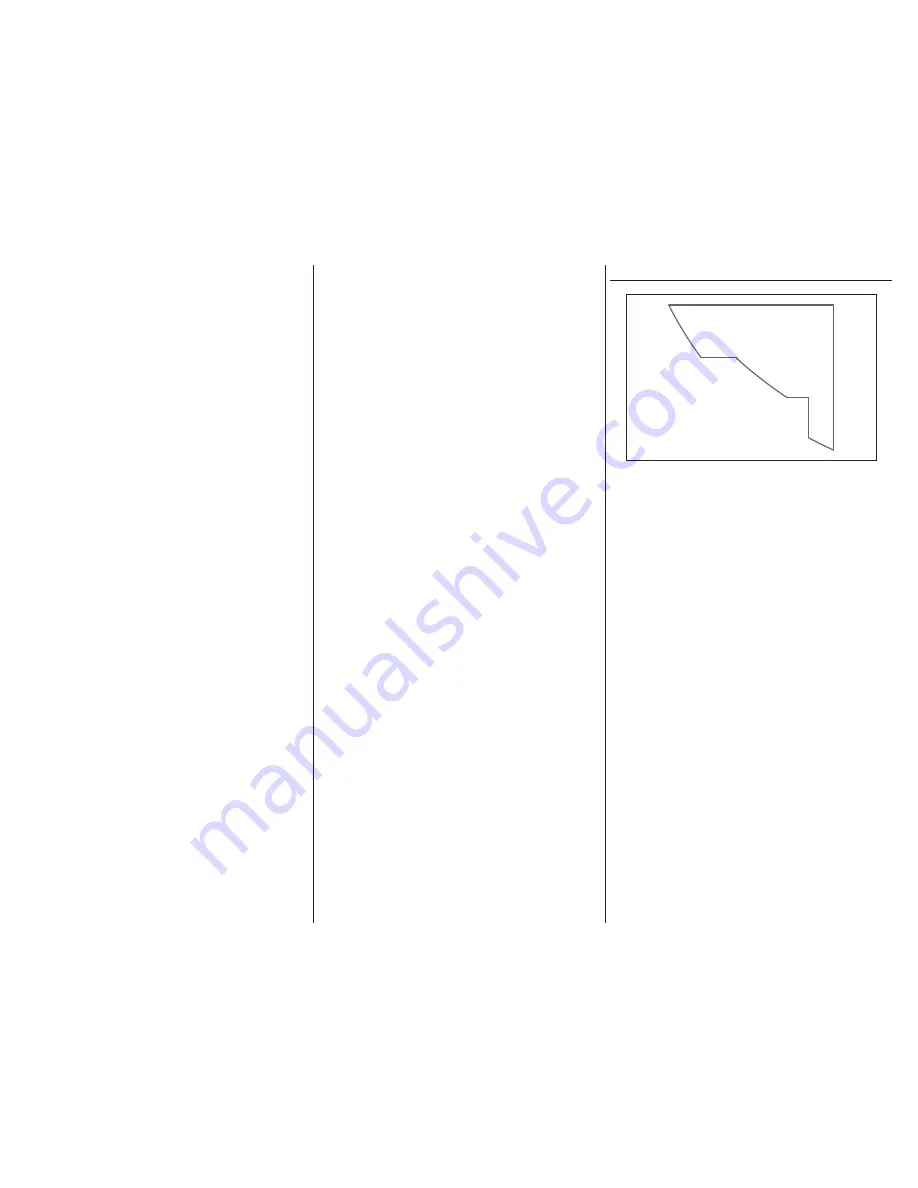
45
E-flite Super Cub 25e ARF Assembly Manual
3. At all flying sites a safety line(s) must be established in
front of which all flying takes place (AMA Document
#706-Recommended Field Layout):
(a) Only personnel associated with flying the model
aircraft are allowed at or in front of the safety line.
(b) At air shows or demonstrations, a straight safety
line must be established.
(c) An area away from the safety line must be
maintained for spectators.
(d) Intentional flying behind the safety line is
prohibited.
4. RC model aircraft must use the radio-control
frequencies currently allowed by the Federal
Communications Commission (FCC). Only individuals
properly licensed by the FCC are authorized to
operate equipment on Amateur Band frequencies.
5. RC model aircraft will not operate within three
(3) miles of any pre-existing flying site without a
frequency-management agreement (AMA Documents
#922- Testing for RF Interference; #923- Frequency
Management Agreement)
6. With the exception of events flown under official
AMA Competition Regulations, excluding takeoff and
landing, no powered model may be flown outdoors
closer than 25 feet to any individual, except for the
pilot and the pilot’s helper(s) located at the flight line.
7. Under no circumstances may a pilot or other person
touch a model aircraft in flight while it is still under
power, except to divert it from striking an individual.
This does not apply to model aircraft flown indoors.
8. RC night flying requires a lighting system providing
the pilot with a clear view of the model’s attitude and
orientation at all times.
9. The pilot of a RC model aircraft shall:
(a) Maintain control during the entire flight,
maintaining visual contact without enhancement other
than by corrective lenses prescribed for the pilot.
(b) Fly using the assistance of a camera or First-Person
View (FPV) only in accordance with the procedures
outlined in AMA Document #550.
C. FREE FLIGhT
1. Must be at least 100 feet downwind of spectators
and automobile parking when the model aircraft is
launched.
2. Launch area must be clear of all individuals except
mechanics, officials, and other fliers.
3. An effective device will be used to extinguish any fuse
on the model aircraft after the fuse has completed its
function.
D. CONTROL LINE
1. The complete control system (including the safety
thong where applicable) must have an inspection and
pull test prior to flying.
2. The pull test will be in accordance with the current
Competition Regulations for the applicable model
aircraft category.
3. Model aircraft not fitting a specific category shall use
those pull-test requirements as indicated for Control
Line Precision Aerobatics.
4. The flying area must be clear of all utility wires or
poles and a model aircraft will not be flown closer
than 50 feet to any above-ground electric utility lines.
5. The flying area must be clear of all nonessential
participants and spectators before the engine is
started.
NAvIGATION LIGhT TRIM TEMpLATE




































